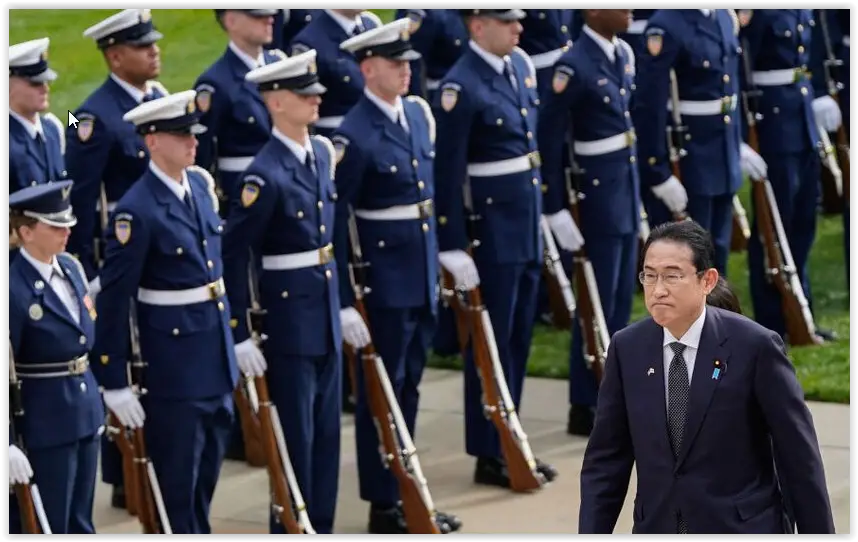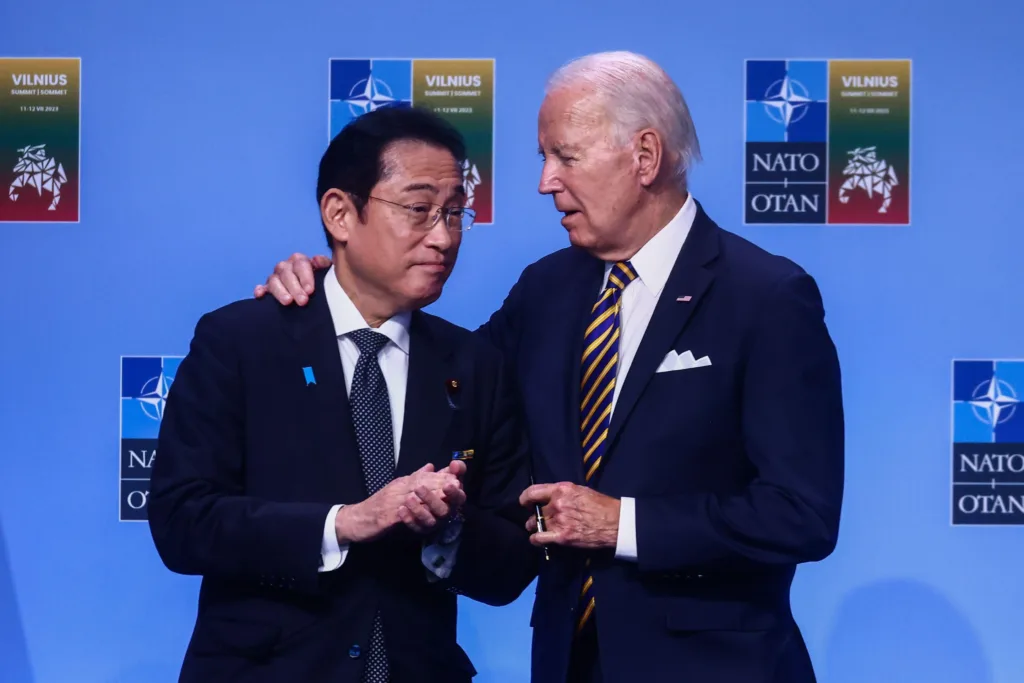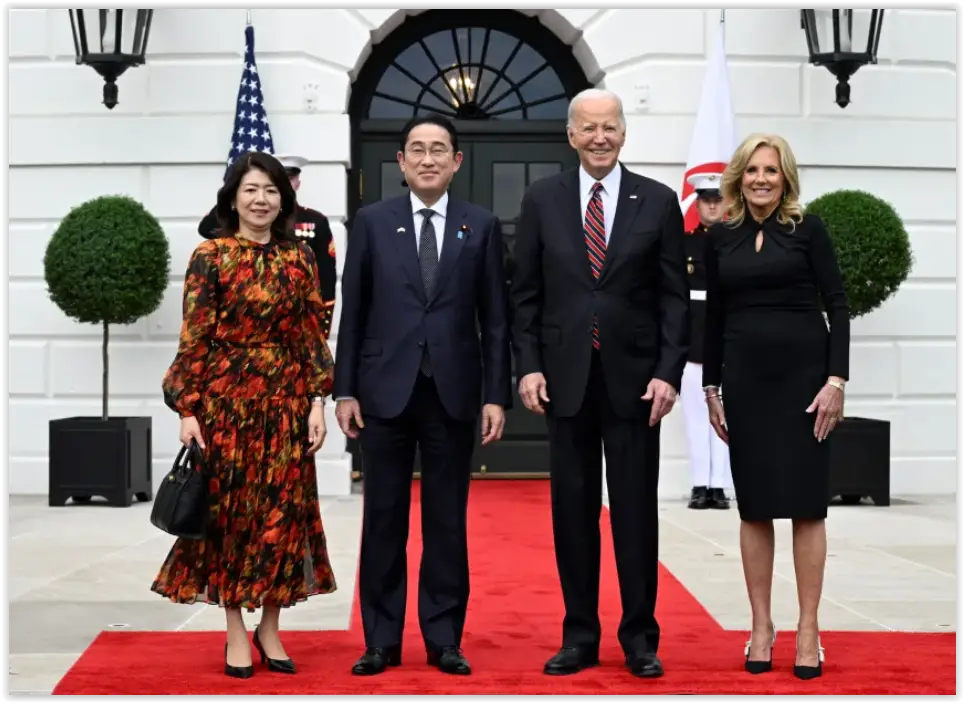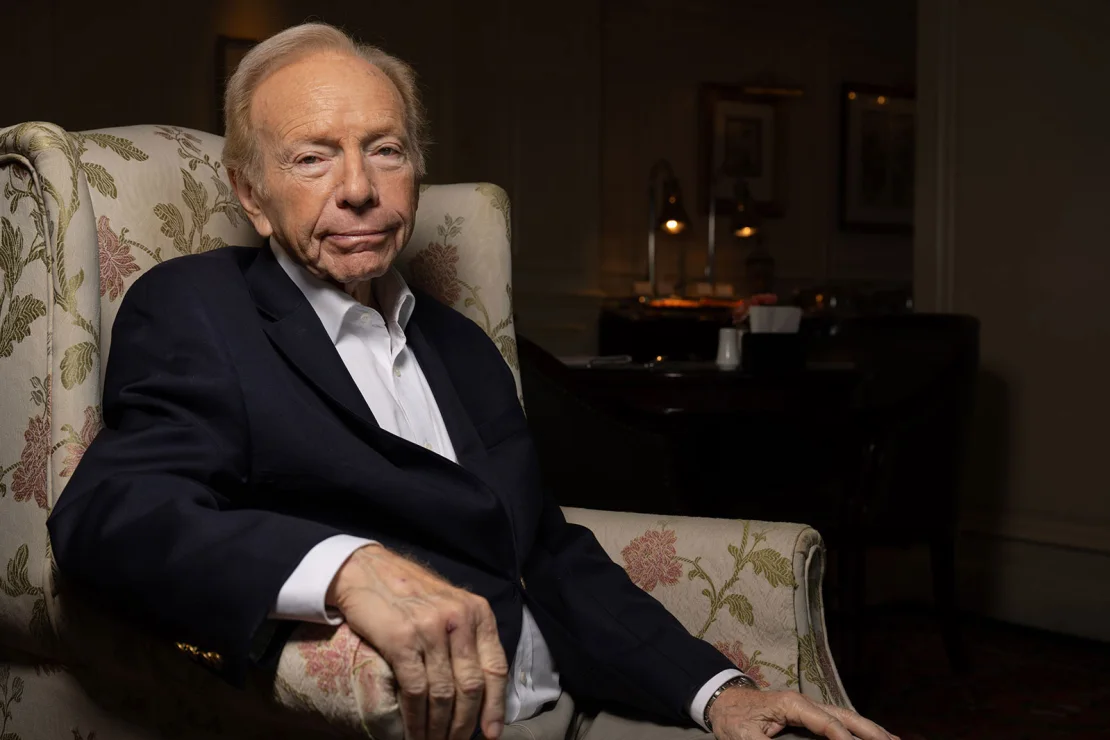In a strategic move to bolster crucial partnerships in the Indo-Pacific region, President Joe Biden hosted Japanese Prime Minister Kishida Fumio for a state visit, emphasizing the United States’ commitment to its allies in the face of a resurgent China. The meeting, including a significant Oval Office discussion, highlighted over 70 anticipated announcements across critical sectors, showcasing a deepening alliance between the two nations. This makes Kishida Fumio’s first official visit to the White House – the first state visit of a Japanese leader since former Prime Minister Shinzo Abe came to US capital in 2015.
The Significance of the Visit: The state visit of Prime Minister Kishida holds immense significance for the United States and Japan, as well as for the broader Indo-Pacific region. It highlights the strong partnership between the two countries, which has been vital for ensuring economic and military stability in the region. Amid escalating tensions with China and nuclear provocations from North Korea, the meeting between President Biden and Prime Minister Kishida serves as a reaffirmation of their commitment to cooperation and shared security goals.

Key Announcements and Agreements: During the bilateral meeting, President Biden and Prime Minister Kishida are expected to announce over 70 items covering critical sectors such as defense, space collaboration, and educational exchanges. These include a commitment to enhance the US force structure in Japan, establish a military industrial council to improve defense cooperation, and integrate anti-missile defense systems between the US, Australia, and Japan. These announcements signify a major update to the nations’ military alliance and underscore their shared commitment to regional security.
Military Cooperation: One of the key aspects of the visit is the focus on enhancing military cooperation between the US and Japan. This includes changes to the US force structure in Japan, which will improve the integration of Japanese and US forces and strengthen their joint defense capabilities. Additionally, the establishment of a military industrial council will facilitate greater collaboration in the production of defense weapons, enhancing interoperability and efficiency.

Space Collaboration: Another important area of discussion is space collaboration, with Japan expressing interest in landing its first astronaut on the Moon. The leaders are expected to detail plans for increased cooperation in space exploration, including Japan’s participation in NASA’s Artemis moon program. This collaboration underscores the shared commitment of both countries to advancing space exploration and scientific discovery.
People-to-People Ties: Efforts to enhance people-to-people ties between the US and Japan are also a focus of the visit. This includes initiatives to increase student exchanges between the two countries and promote cultural understanding. Scholarships will be created to fund high school students from the US to study in Japan and vice versa, fostering greater mutual understanding and cooperation.
Challenges and Opportunities: Despite the strong partnership between the US and Japan, there are challenges that both countries must address. One such challenge is the economic front, with President Biden opposing Japan’s efforts to purchase US Steel. However, officials believe that the relationship between the two countries is larger than one commercial deal and will not be affected by this disagreement.

Conclusion: The state visit of Japanese Prime Minister Kishida Fumio to the United States highlights the strength and importance of the partnership between the two countries. It demonstrates their shared commitment to regional security, economic prosperity, and cultural exchange. As the Indo-Pacific region faces increasing challenges, the visit serves as a reaffirmation of the strategic importance of the US-Japan alliance and their determination to address these challenges together.


